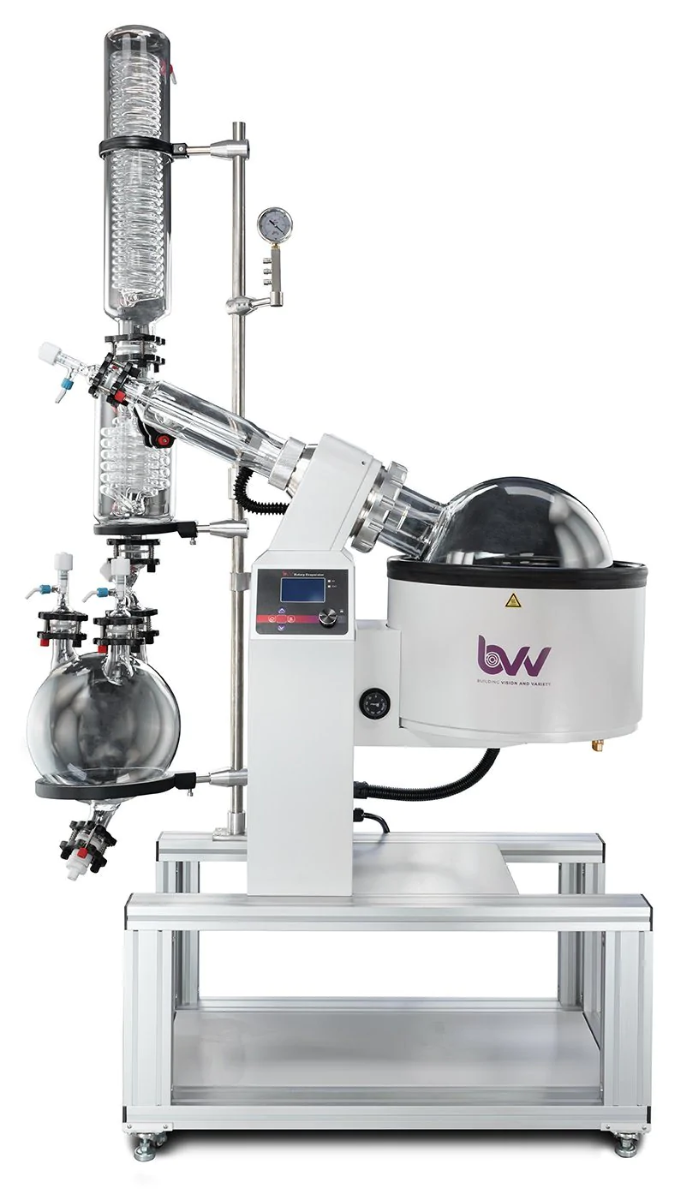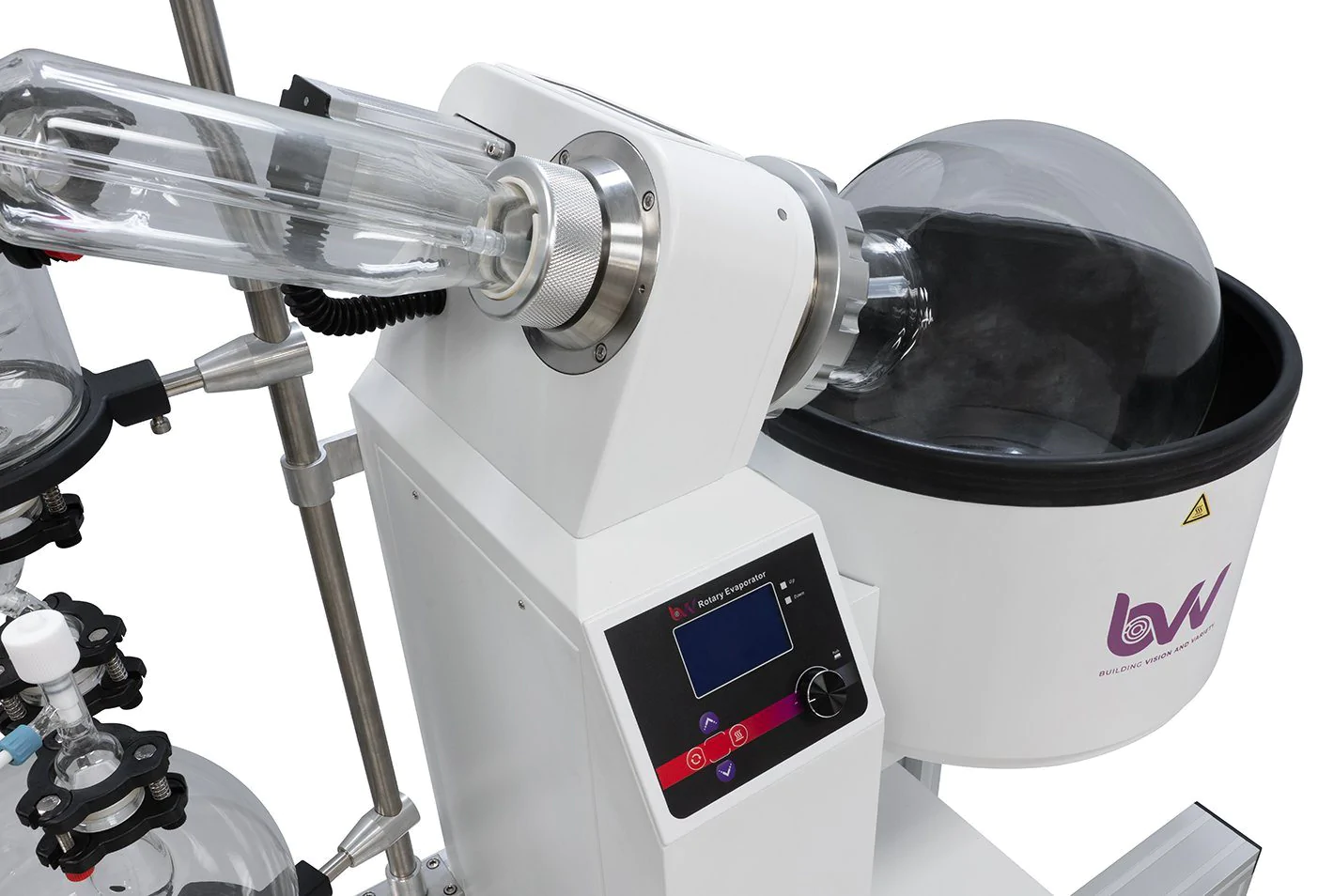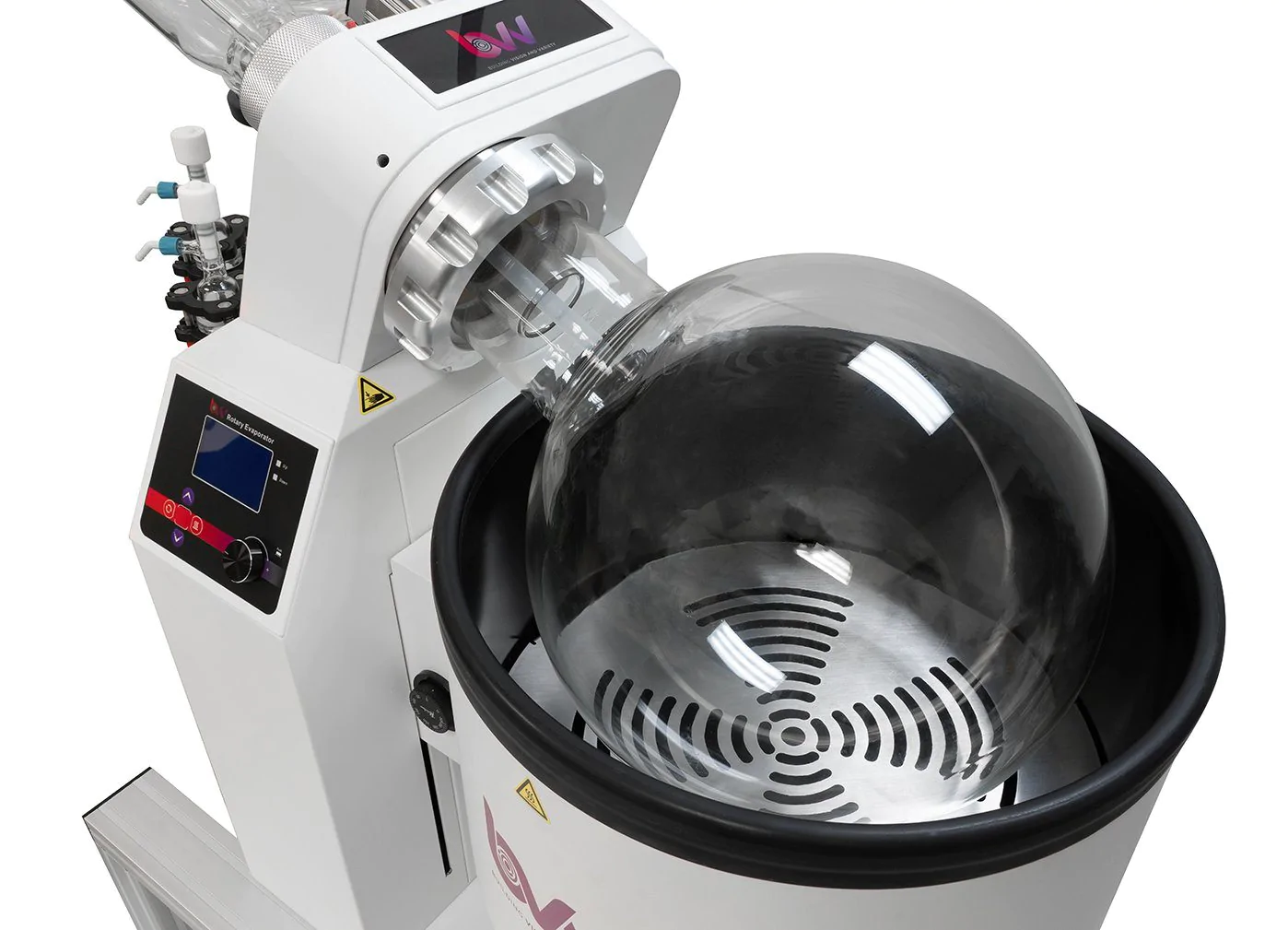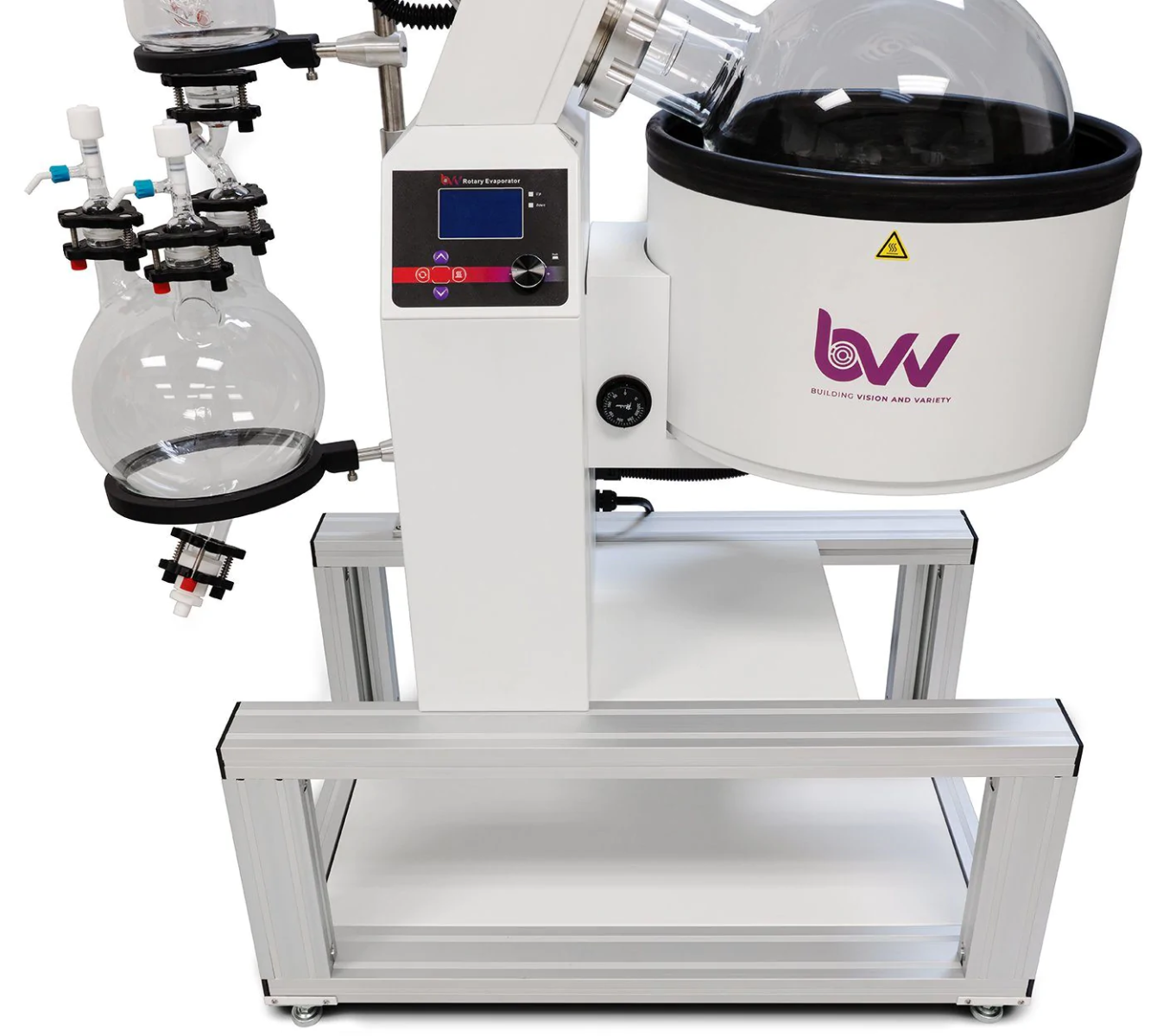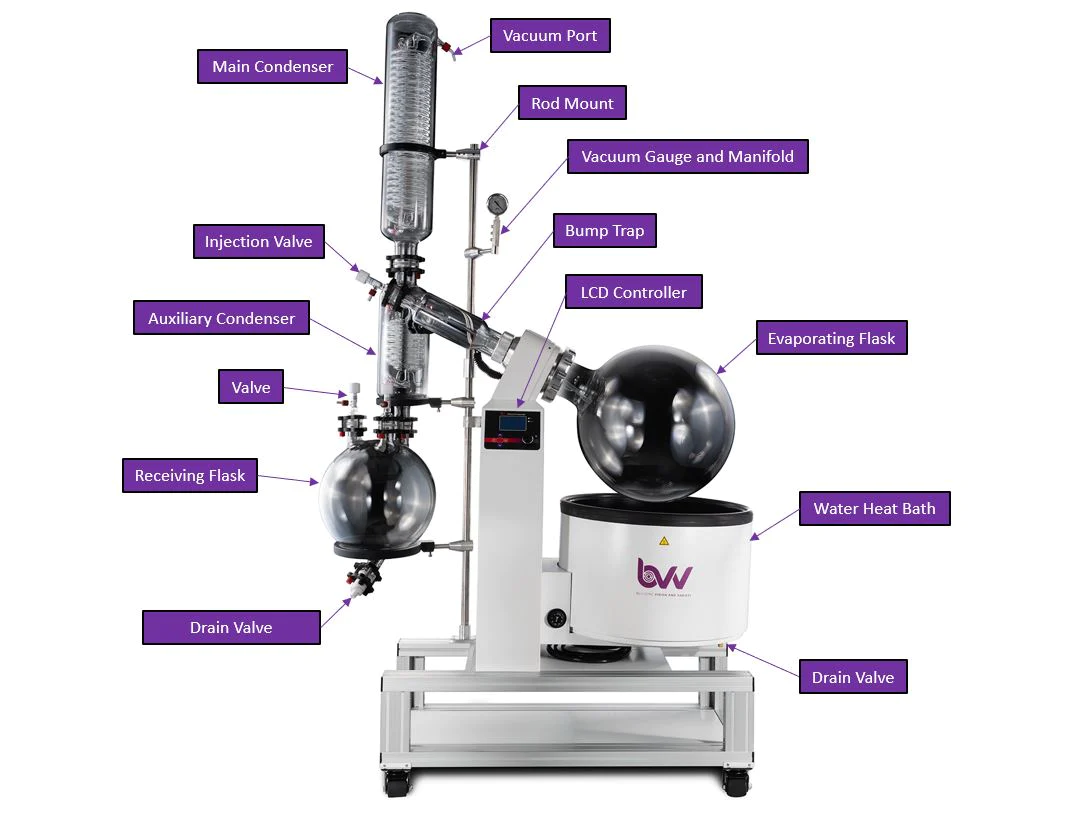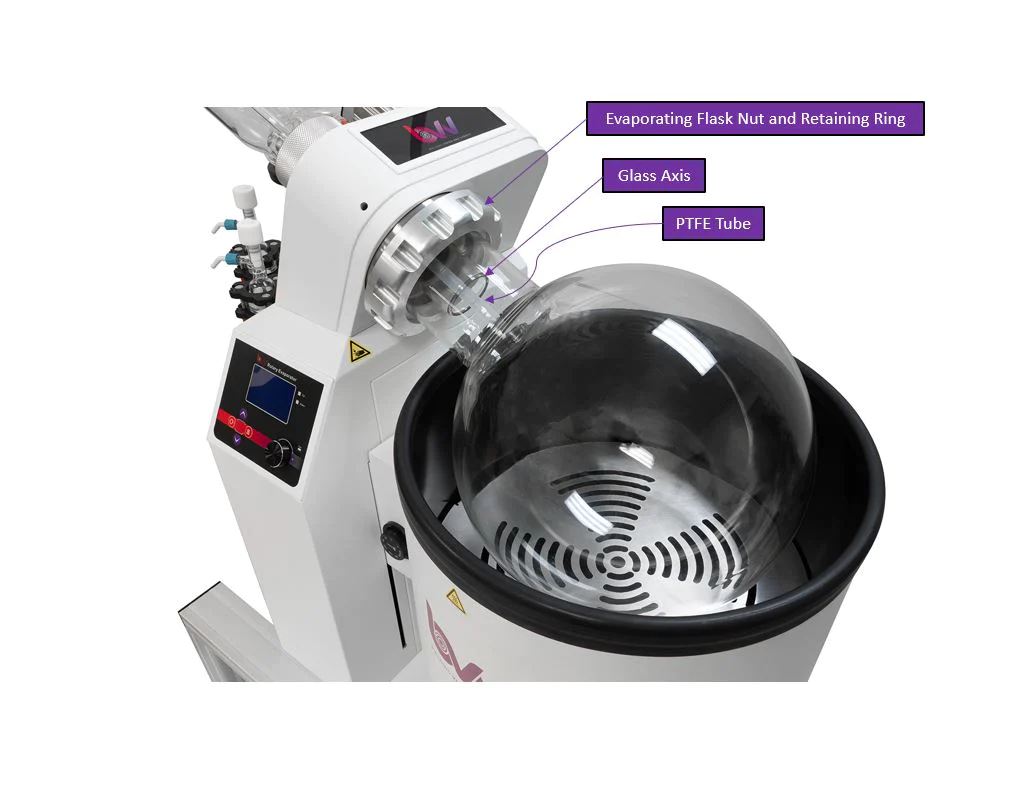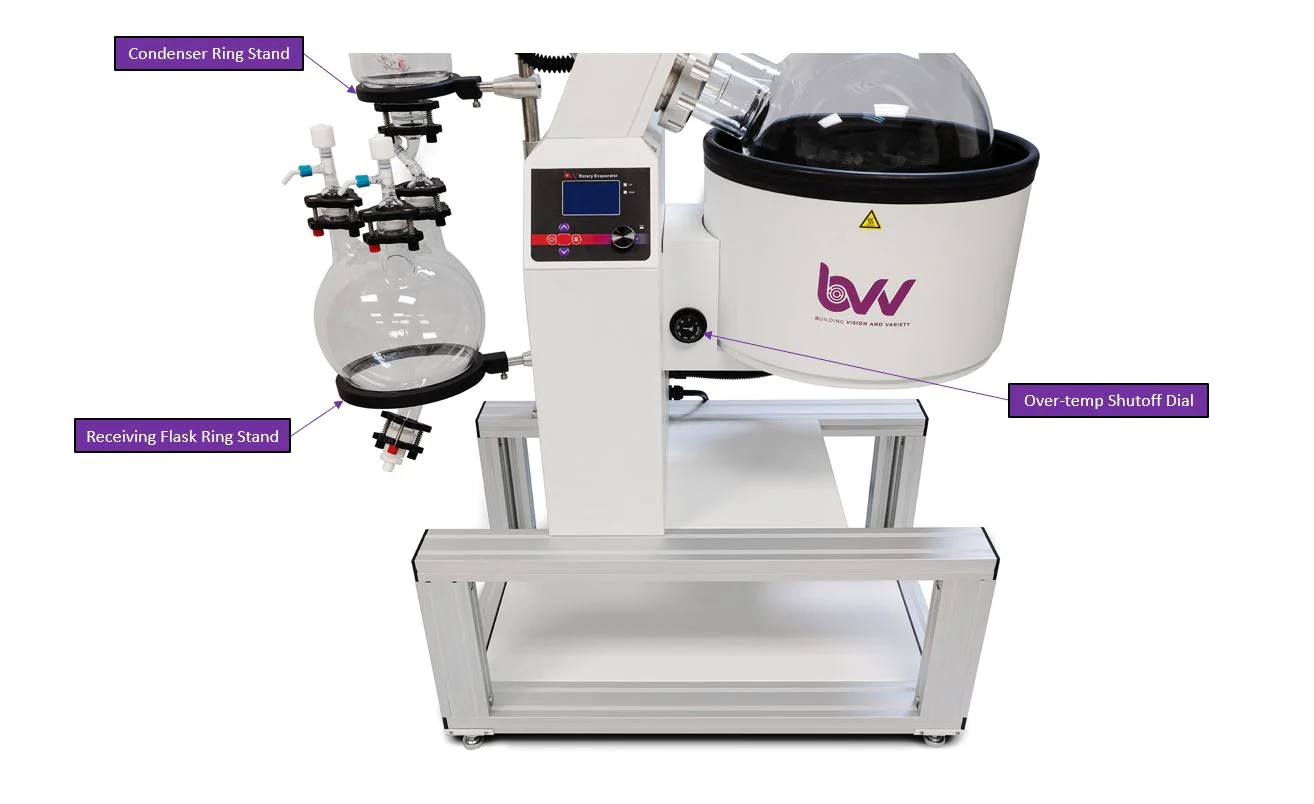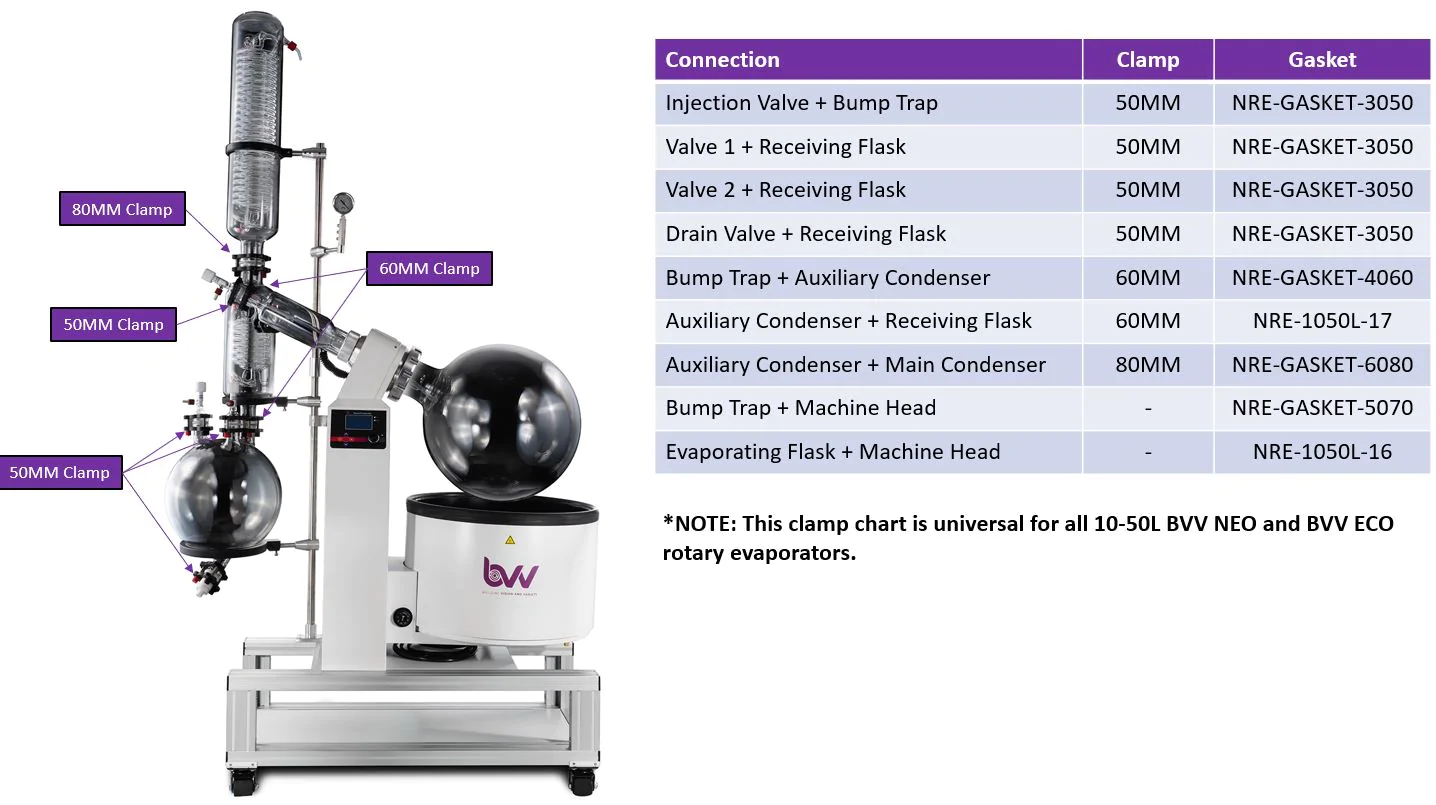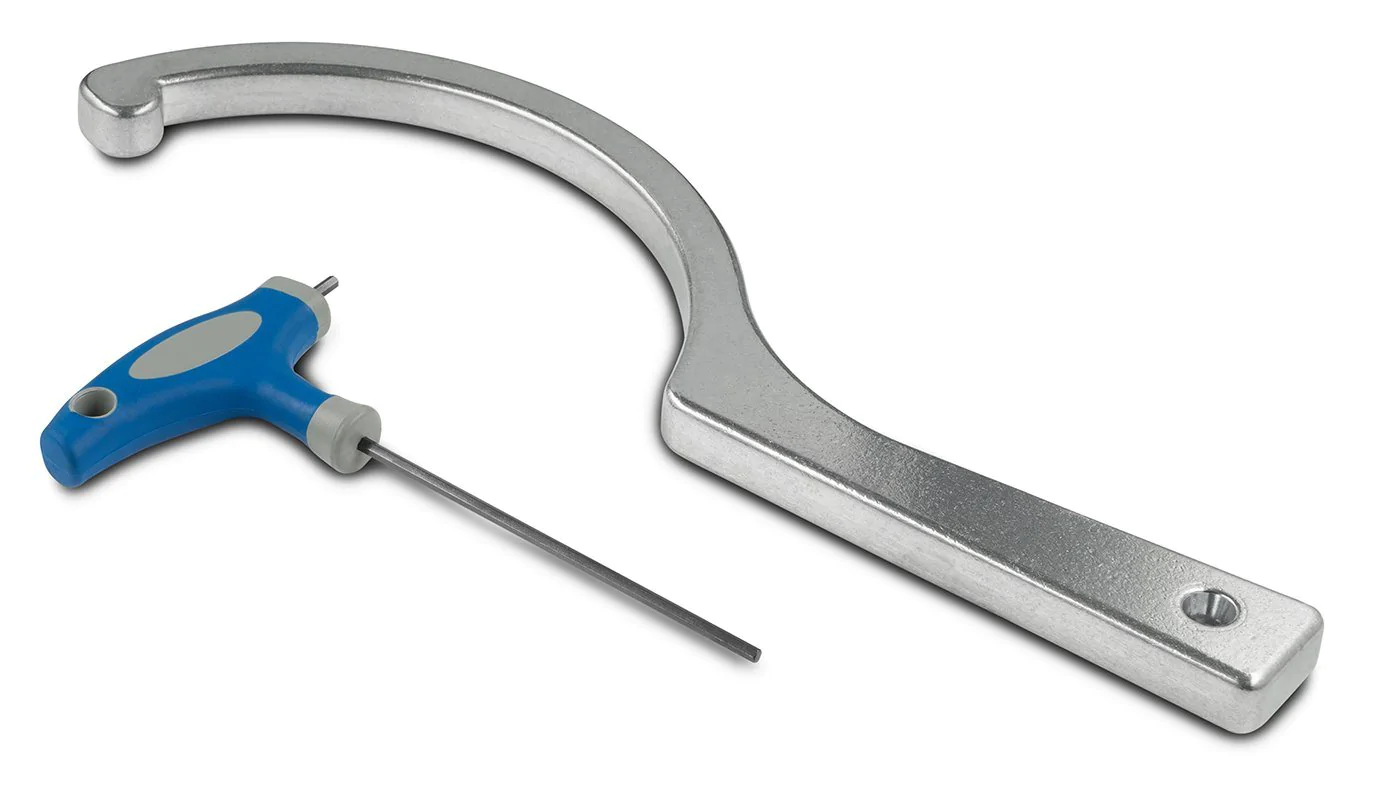
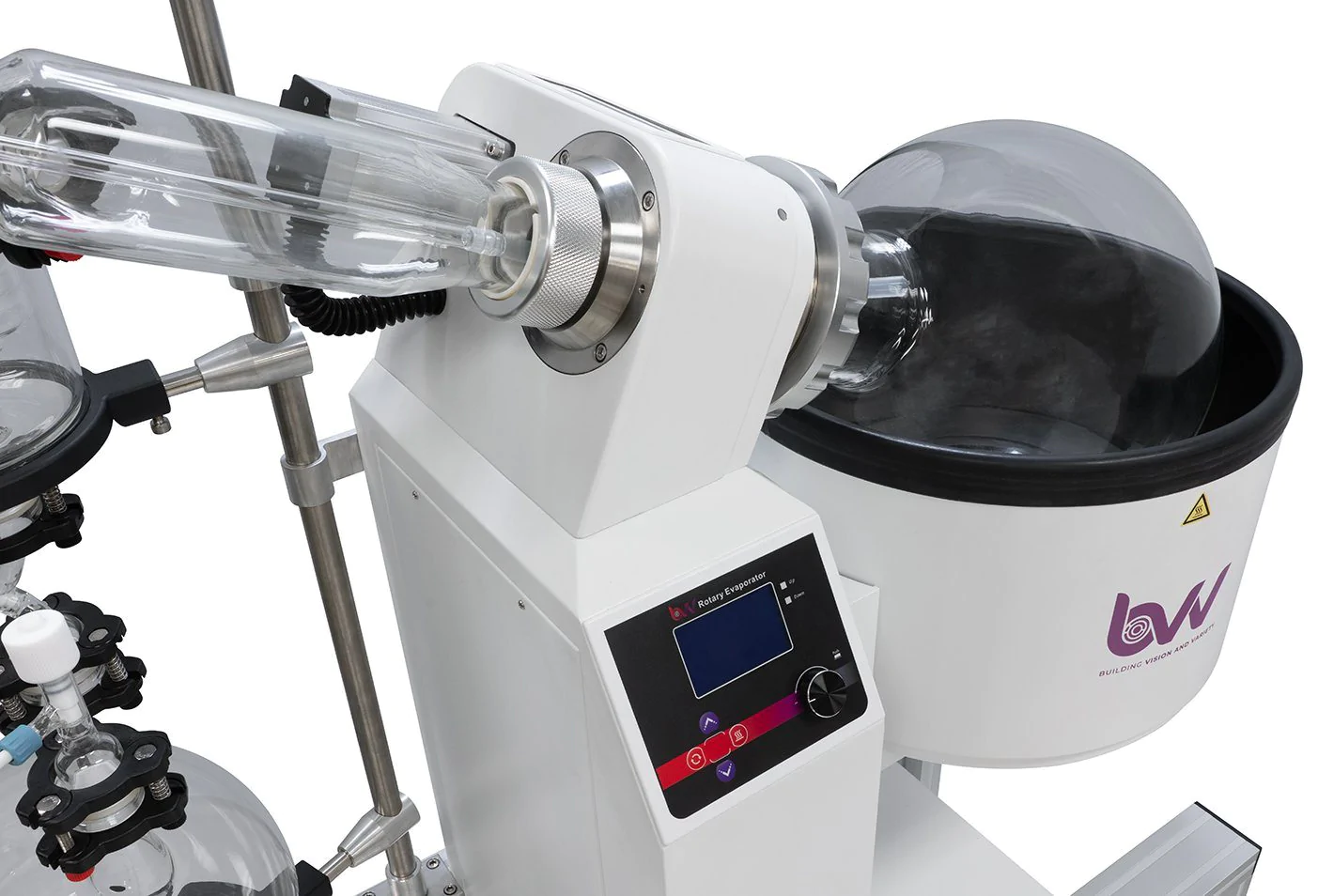
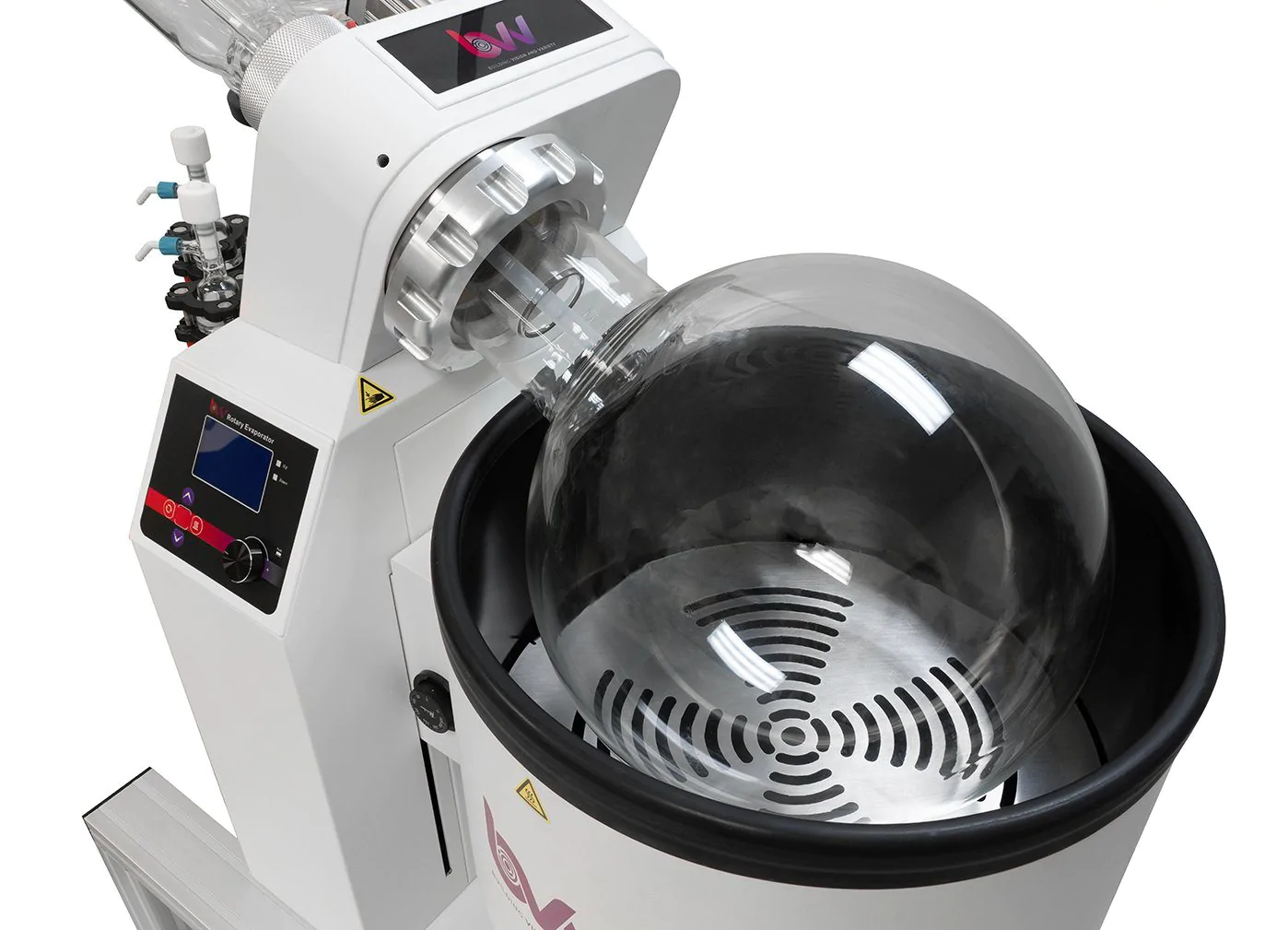
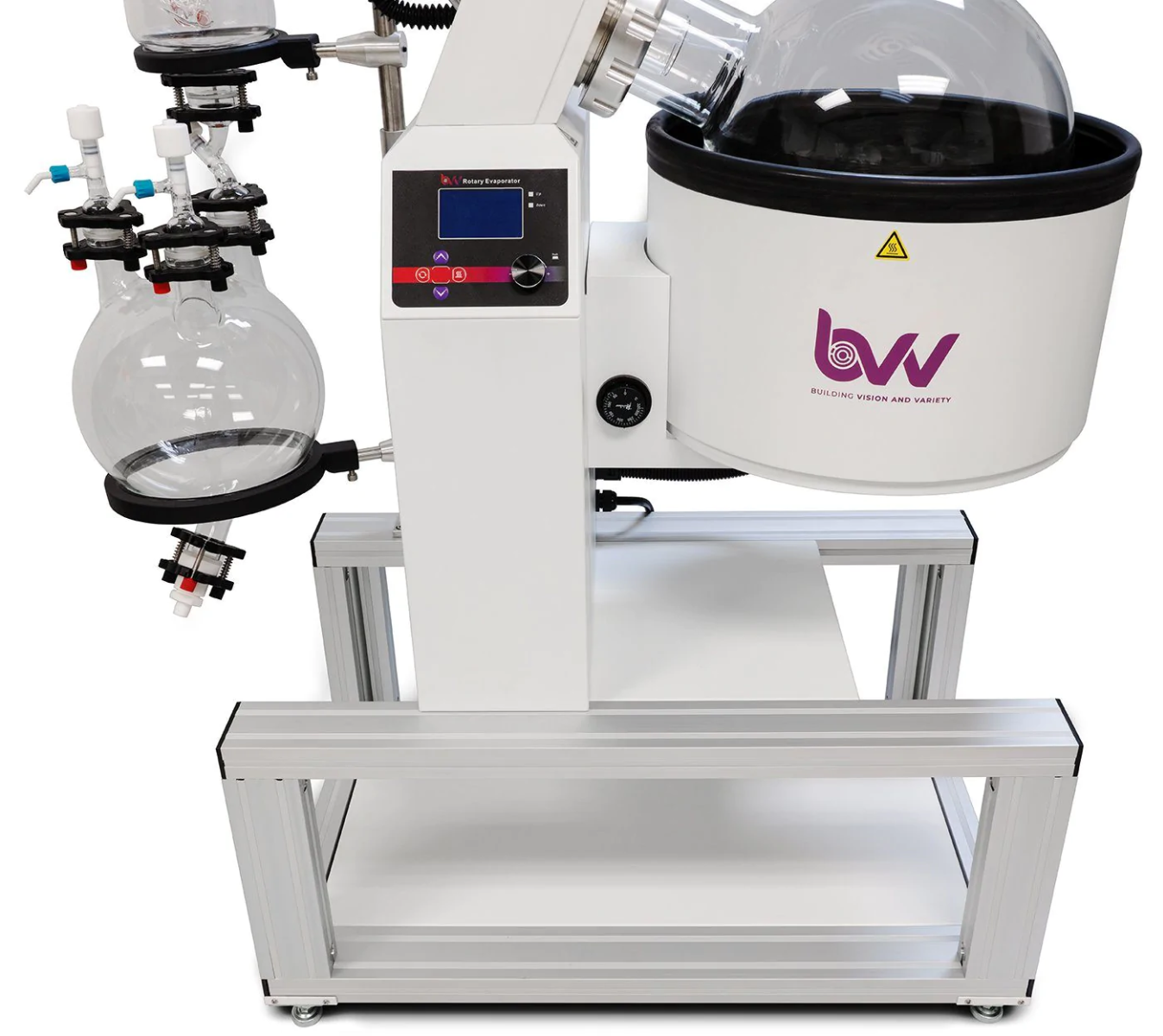
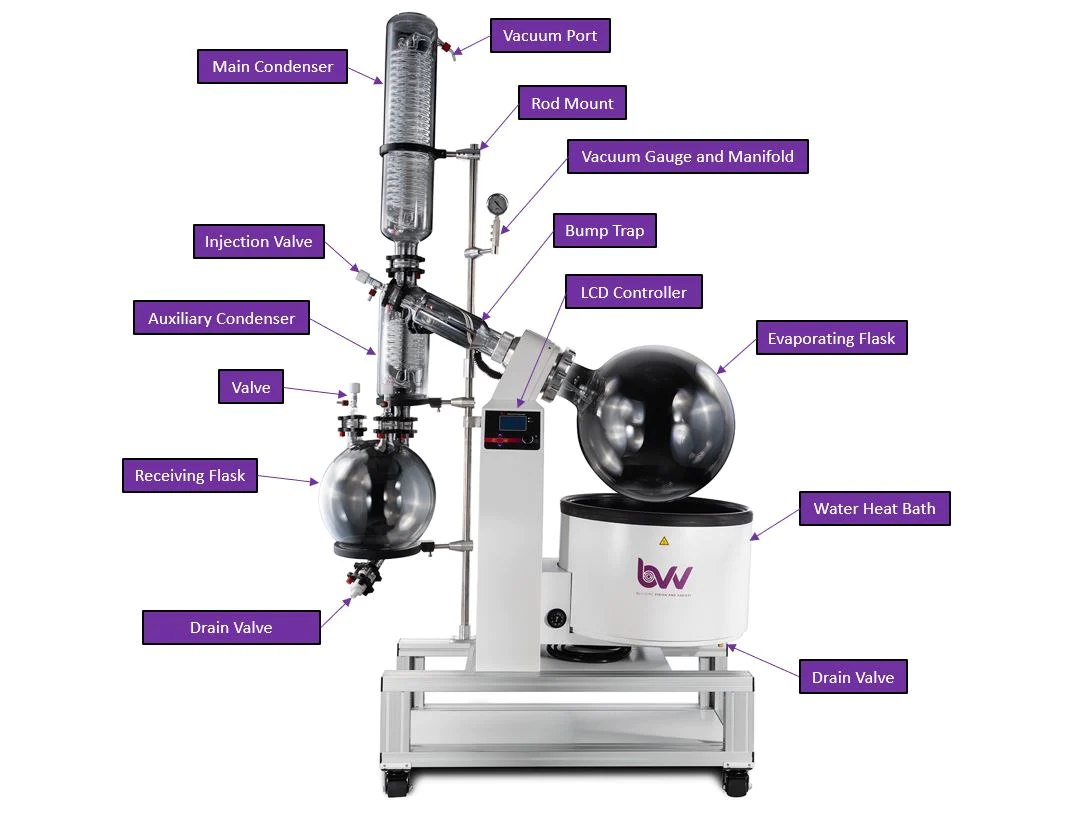
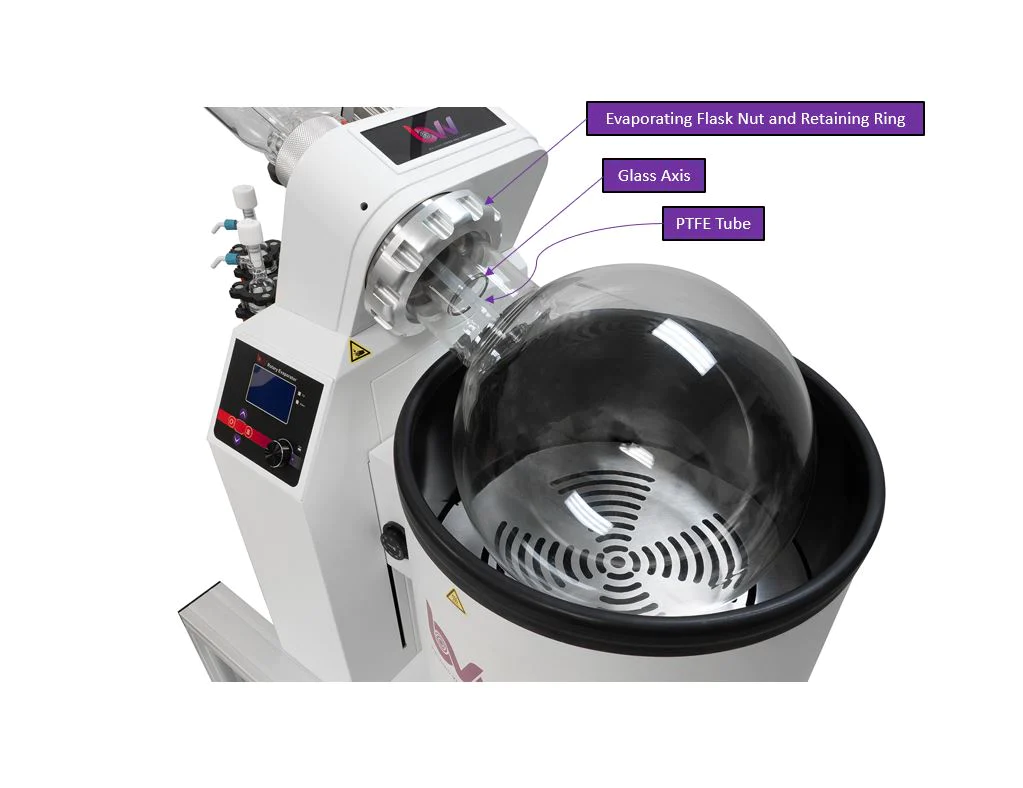
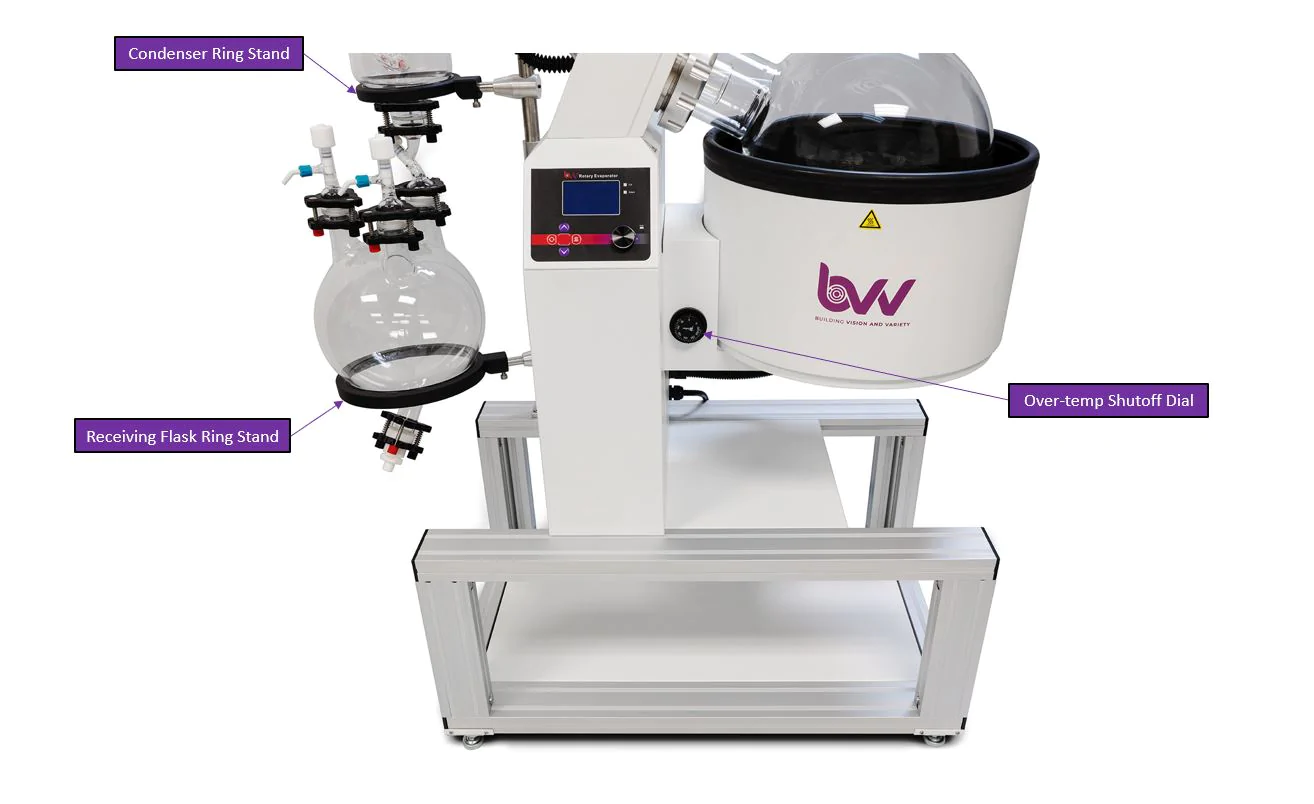
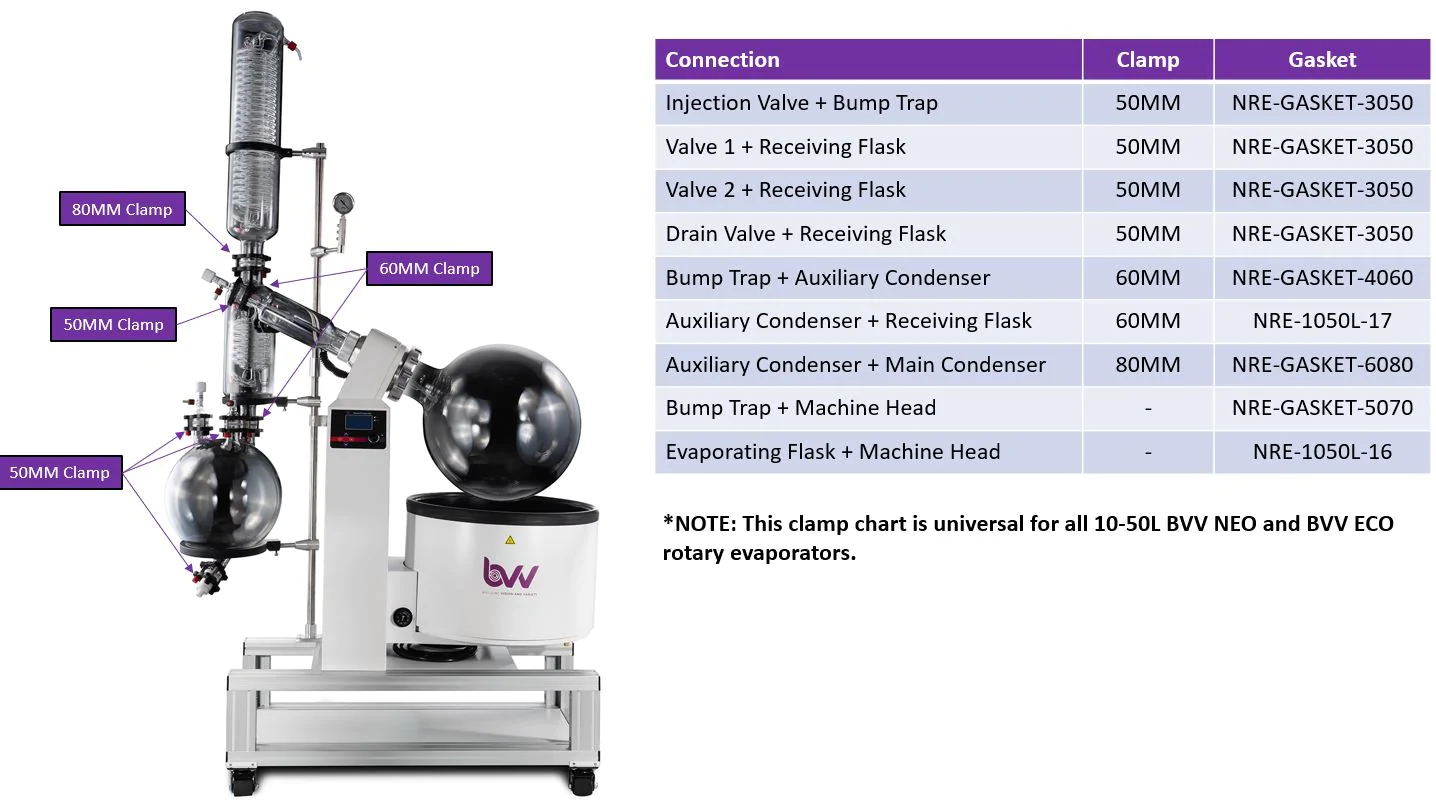
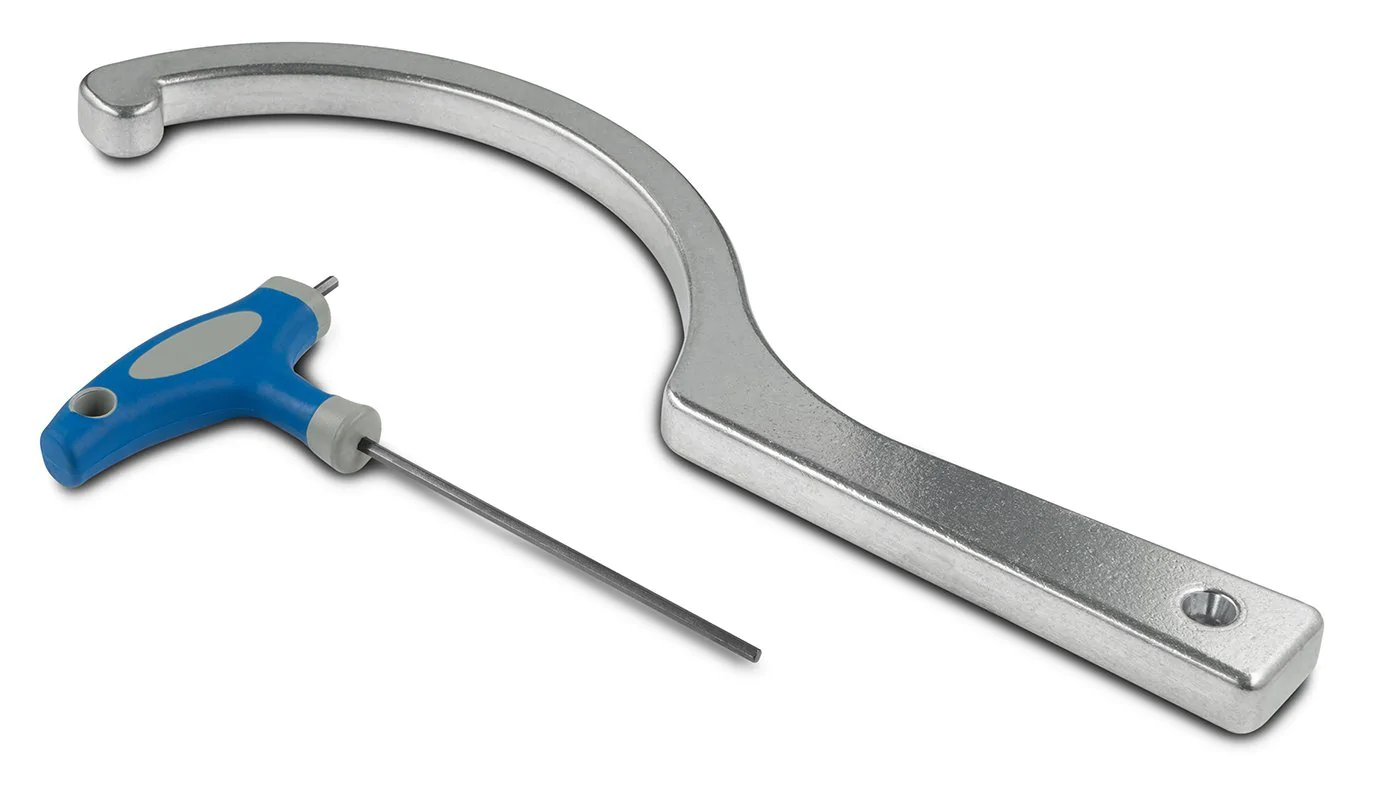
10-50L NEO and ECO Rotary Evaporator Diagram

Features:
- ETL Certified for Lab use.
- Digital temperature and speed control with a simple user interface
- Electric Bath Lift
- Teflon Coated Bath for corrosion resistance
- High-efficiency drain port and injection valves
- Smaller footprint for improved workspace allocation
- Mobility with locking casters
- Shorter vapor path for faster evaporation and condensation
- Direct injection capability for continuous feeding of solution
- Continuous draining capability without the need to release the vacuum or stop the system
- 1-year warranty on all mechanical parts. Does not include glassware.
Specifications:
| Model | 20L Solvent Pro Series Rotary Evaporator | Heater Max Current Draw (Amps) | 25 |
| Optimum Ambient Temperature | 5~25C / 41~105.8F | Water Bath Material | 304 Stainless Stee |
| Glass Material | GG-17 High Borosilicate | Water Bath Size | 17.7 x 9.8 in. |
| Glass Material | 240V 60Hz Single Phase | Lifting Function | Electric |
| Speed Regulation | Digital Step-less Regulation | Lifting Stroke | 190mm / 7.5 in. |
| Rotation Speed | 0-120 RPM | Total Power Consumption (kW) | 4.1 |
| Set Temperature | 0-99C / 0-210F | Dimensions | 49 x 24 x 83 in. |
| Temperature Control | Digital Temperature Control | Weight | 155 lbs |
| Maximum Vacuum Pressure | -29.8 inHg | Vacuum Connection | 10mm / 3/8 in. Barb |
| Evaporating Flask Capacity | 20L (20000ml) | Condenser Connection | 10mm / 3/8 in. Barb |
| Receiving Flask Capacity | 10L (10000ml) | Warranty | 1 Year excluding glass parts |
| Condenser Style | Main + Auxiliary Vertical Double Helix | Certifications | ETL |
Rotovap Quick Start Guide
This guide gives basic quick-start instructions for rotovaps. It is intended to provide a starting point for learning the process. Parameters should be adjusted to suit specific needs.
- Clean and assemble the unit. Make sure all pieces are cleaned and sterilized using an alcohol solution.
- Connect the chiller to the condenser and set it to 0C (32F). Always fill a rotovap condenser from the top down (chiller output to top of condenser, chiller input to bottom of condenser).
- Connect the vacuum pump to the cold trap and connect the cold trap to a vacuum port on rotovap.
- Turn on the heat bath and set it to 40C (113F).
- Once the heat bath, chiller, and cold trap have reached desired temperatures, turn on rotovap motor and set the speed to approximately 100 RPM (does not have to be precise). Keep in mind, higher
- RPM's will increase evaporation power but also increase heat load.
- Start the vacuum pump and allow the vacuum to pull down for a few minutes before injection.
- Once the vacuum has been pulled to a sufficient level (does not have to be precise but should be below 100 Torr), using the injection valve, very slowly inject approximately 500 mL of solution into
- the evaporating flask and then close the valve. Allow this small amount to begin evaporating. You may see the chiller begin to rise in temperature, this is called ”œpriming” the rotovap.
- Once the temperature stops rising or all liquid is almost completely evaporated, open the injection valve again very slowly so that a small amount of liquid begins to enter the evaporating
- flask. Do not close the injection valve this time but continue to allow the solution to enter the evaporating flask.
- At this point, you must try to match the input speed to the output speed. What this means is that you should be injecting the same amount of liquid into the rotovap that is equal to the
- amount of liquid dripping from the condenser into the receiving flask. You will know that the input speed and output speed are matched because the chiller will remain at a stable
- temperature. If the chiller begins to rise, then you are injecting too much liquid. Dial back the valve until the chiller stabilizes.
- Once everything is stabilized, you may walk away from the rotovap if necessary. Check every so often to make sure temperatures remain stable and evaporation continues efficiently.
***Note: All units are inspected for broken glass or parts before the unit is shipped. If the unit arrives damaged or glass is broken (this does not include minor imperfections or scuffs in glassware), the Customer MUST contact BVV™ within 3 days of delivery to file a claim and receive a replacement part. If the customer DOES NOT contact BVV™ within 3 days of delivery responsibility for replacement parts falls on the customer and they must pay for replacement pieces.***
***Note: This item will ship by freight only.***
***Glassware Safety Disclaimer: BVV™ is not responsible for the failure of glassware which must be inspected before and after every use because it may eventually develop imperfections or damage through normal usage, mishandling, and stress caused by temperature variations. If an imperfection or damage is noted while inspecting the glassware DO NOT use the glassware because it can fail to cause bodily harm or damage to the surrounding area.***

